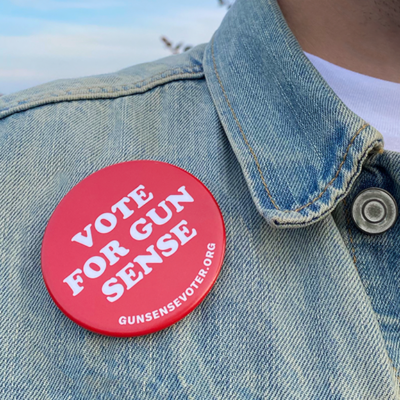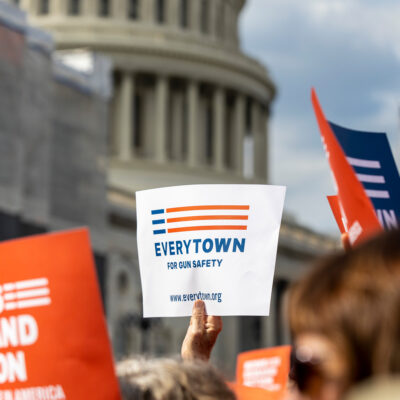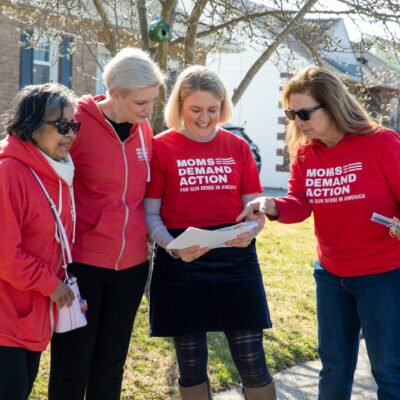Violence Intervention Programs
What does it solve?
Community violence intervention programs provide evidence and community-informed, comprehensive support to individuals who are at the greatest risk of gunshot victimization. These programs are shown to reduce gunshot woundings and deaths in the neighborhoods most impacted by gun violence.
Gun homicides and assaults occur at high rates within cities and have a disproportionate impact in historically underfunded and segregated neighborhoods.1Mudia Uzzi et al., “An Intersectional Analysis of Historical and Contemporary Structural Racism on Non-Fatal Shootings in Baltimore, Maryland,” Injury Prevention 29, no. 1 (2023): 85-90, https://doi.org/10.1136/ip-2022-044700. Gun violence in cities reflects and amplifies this country’s long-standing systemic and structural inequities.
City leaders, local groups, and residents are driving solutions to reduce gun violence and increase safety in their communities. To reduce gun homicides and assaults within cities, leaders and legislators must invest in community-driven, evidence-informed interventions.
Funding for Violence Intervention Programs
Which states dedicate funding to violence intervention programs?
Alabama has not adopted this policy
Alaska has adopted this policy
Arizona has not adopted this policy
Arkansas has not adopted this policy
California has adopted this policy
Colorado has adopted this policy
Connecticut has adopted this policy
Delaware has adopted this policy
Florida has adopted this policy
Georgia has adopted this policy
Hawaii has adopted this policy
Idaho has not adopted this policy
Illinois has adopted this policy
Indiana has adopted this policy
Iowa has adopted this policy
Kansas has adopted this policy
Kentucky has adopted this policy
Louisiana has adopted this policy
Maine has not adopted this policy
Maryland has adopted this policy
Massachusetts has adopted this policy
Michigan has adopted this policy
Minnesota has adopted this policy
Mississippi has not adopted this policy
Missouri has adopted this policy
Montana has adopted this policy
Nebraska has adopted this policy
Nevada has adopted this policy
New Hampshire has not adopted this policy
New Jersey has adopted this policy
New Mexico has adopted this policy
New York has adopted this policy
North Carolina has adopted this policy
North Dakota has adopted this policy
Ohio has adopted this policy
Oklahoma has not adopted this policy
Oregon has adopted this policy
Pennsylvania has adopted this policy
Rhode Island has adopted this policy
South Carolina has adopted this policy
South Dakota has not adopted this policy
Tennessee has adopted this policy
Texas has adopted this policy
Utah has adopted this policy
Vermont has adopted this policy
Virginia has adopted this policy
Washington has adopted this policy
West Virginia has adopted this policy
Wisconsin has adopted this policy
Wyoming has adopted this policy
Myth & Fact
Myth
Most violence in cities is gang-related.
Fact
In reality, although some gun violence is connected to gang activity, gun violence occurs more frequently within informal social networks tied together by the places people live, the schools they attend, and their places of worship. Gun violence within these social networks is further concentrated into a very small percentage of people. This gun violence frequently follows a dispute or perceived disrespect, and between people who are known to one another. These encounters become deadly because a gun is present.
How it works
Community violence intervention programs apply a localized approach to gun violence prevention.
Community violence intervention programs identify those who are at the highest risk and work to reduce violence through targeted interventions. There are several program models being used across the country.
Street Outreach: This program model employs a public health approach to fight violence. The program has street outreach workers who actively work to mediate conflicts and prevent retaliatory violence between those who are at-risk to commit or become the victims of gun violence.
Hospital-Based Violence Intervention Programs (HVIPs): These programs are located in trauma centers and emergency departments. They engage patients while they are still in the hospital, often just hours after a violent injury, to reduce the chance of retaliation and violent injury recurrence and offer subsequent case work and services in areas such as mental health counseling, financial and educational support, and more. They are based on the premise that there is a unique window of opportunity to engage victims of violence in the immediate aftermath of a traumatic injury.
Crime Prevention Through Environmental Design (CPTED): These initiatives work to create livable and/or green spaces in which community members feel safe, thereby discouraging and reducing gun violence. These initiatives include such activities as cleaning vacant lots, greening parks, restoring or demolishing abandoned buildings, adding lighting to public spaces, and more.
Summer Youth Employment Programs (SYEP): These programs reduce violence by providing young people with prosocial, developmental employment opportunities during the off-school season, when they may otherwise lack structure and supervision.
Group Violence Intervention (GVI) programs: This program model utilizes the call-in, a meeting where members of violent groups hear from law enforcement, social service organizations, and community members that the violence must stop. Law enforcement brings a strong message that if violence continues, the perpetrators will be caught and face harsh consequences. Individuals seeking help are connected to social services, including counseling, education programs, and employment opportunities.
By the numbers
6x
Compared to nonparticipants, HVIP participants in Baltimore were six times less likely to be hospitalized for another violent injury two years post–program completion.
↓43%
Chicago’s SYEP reduced violent arrests by 43% among participants 16 months post-program completion.
<$10,800
Hospital-Based Violence Intervention Programs (HVIP) are cost-effective: The average cost of an HVIP is fewer than $10,800 per participant, compared to more than $37,000 for the average medical cost of a nonfatal firearm assault injury.
<$3,400






